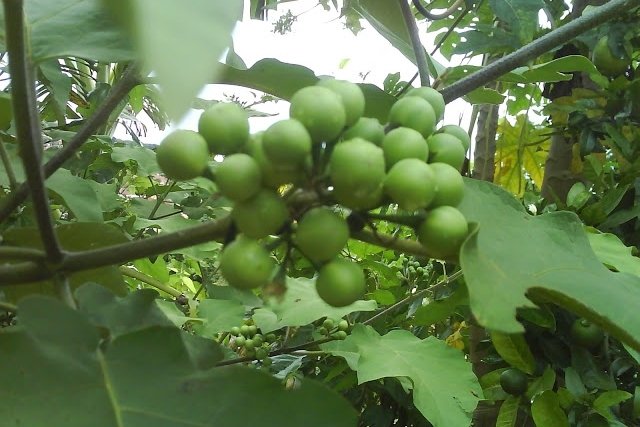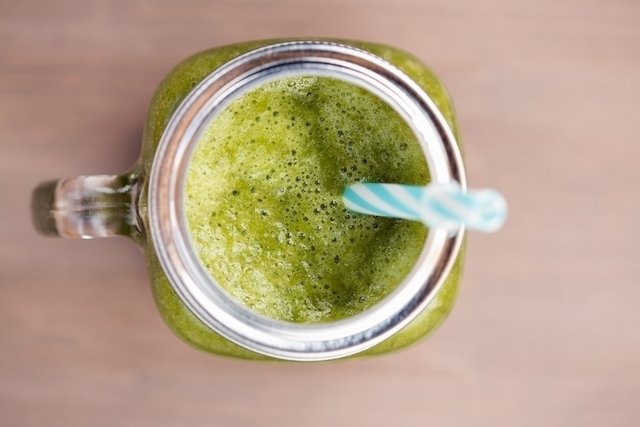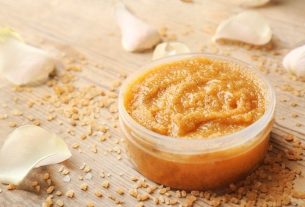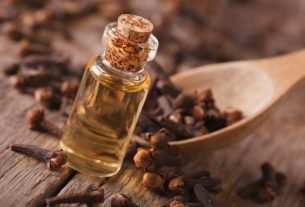Jurubeba, also known as jubebe, real jurubeba, jupeba, juribeba, jurupeba is a medicinal plant with a bitter taste, which has smooth leaves and curved thorns on the trunk, small yellow fruits and lilac or white flowers and can be used for assist in the treatment of illnesses, in cooking or to prepare alcoholic drinks such as cachaça or wine.
The jurubeba root can be used to treat diseases such as anemia, arthritis, liver disease or digestive problems, while the leaves can be used for gastrointestinal tract problems such as excess gas or a burning sensation in the stomach, as well as bronchitis. , cough and liver problems such as hepatitis or jaundice, for example.
Jurubeba can be purchased in some natural product stores, open-air markets or in some markets. Furthermore, jurubeba is part of the list of plants in the Unified Health System (SUS) for the development of herbal medicines. However, jurubeba should not be used for more than 1 week as it can cause side effects such as diarrhea, gastritis, nausea or increased liver enzymes. Therefore, it is important to use this medicinal plant with the guidance of a doctor or other healthcare professional who has experience with the use of medicinal plants.

What is it for
Jurubeba has anti-inflammatory, decongestant, digestive, diuretic, laxative, anti-fever, liver protective and vascular tonic medicinal properties, in addition to purifying the blood and unblocking the liver and spleen. Therefore, the main indications for the use of jurubeba are:
- Hepatitis or jaundice;
- Gastritis, gastric ulcer or burning sensation in the stomach;
- Lack of appetite;
- Excess intestinal gas;
- Constipation;
- Nausea;
- Weight loss;
- Anemia;
- Arthritis;
- Cough or bronchitis;
- Fever;
- Gripe;
- Bladder problems such as cystitis;
- Diabetes;
- Inflammation in the spleen;
- Erysipelas;
- Skin wounds;
- Acne;
- Bruises;
- Malaria.
Furthermore, the roots and fruits of jurubeba have diuretic and anti-inflammatory properties and may be useful to help treat bladder or urinary tract infections.
How to use jurubeba
Jurubeba can be used in teas as an infusion, tincture, root and fruit juice, preserves or powder.
1. Jurubeba tea
Jurubeba tea can be used for liver or stomach problems, fever, arthritis, bronchitis or cough or as a diuretic and tonic, for example.
Ingredients
- 2 tablespoons of jurubeba leaves, fruits or flowers;
- 1 liter of water.
Preparation mode
Boil the water, add the jurubeba and let it boil for 5 to 10 minutes. Turn off the heat, cover and leave to rest for 10 minutes. Strain and drink the tea. You can drink 3 cups of warm tea, without sugar per day, for a maximum of 1 week.
2. Jurubeba poultice
Jurubeba tea should be made for external use only and can be used on the skin to heal wounds, for acne, bruises or to wash wounds.
Ingredients
- 1 tablespoon of leaves cut into pieces;
- 1 cup of tea.
Preparation mode
Put the water to boil and add the jurubeba. Let it boil for 10 minutes and strain. Wait for it to warm, place the poultice in a clean, dry compress, preferably sterile gauze, for example, and apply it to the injury site.
3. Jurubeba juice
Jurubeba juice must be prepared with the fruit and roots of the jurubeba and is indicated for bladder or urinary tract infections, anemia, cough or bronchitis.
Ingredients
- 1 tablespoon of jurubeba fruit;
- 1 tablespoon of jurubeba root;
- 1 liter of water.
Preparation mode
Add all the ingredients to the blender and blend until you have a homogeneous mixture. You can sweeten it with honey, which is also good for improving coughs or bronchitis and for improving the bitter taste. Take 1 to 2 glasses of jurubeba juice per day, for a maximum of 1 week.
4. Jurubeba preserve
Preserved jurubeba can be prepared to eat in food, in salad or in soups, for example.
Ingredients
- 1 cup of fresh jurubeba fruits;
- 2 cloves of chopped garlic;
- Water to cook the fruits;
- Salt to taste;
- Olive oil to taste;
- Seasonings to taste such as black pepper, bay leaves, marjoram or other herbs;
- Enough vinegar to cover the glass jar.
Preparation mode
Wash and clean fresh jurubeba fruits and soak in water for 24 hours. After this time, boil the jurubeba fruits with water and add salt. Change the jurubeba water 5 to 6 times to remove the bitter taste. Drain the water and wait for the fruits to cool. Then place the fruits in a clean glass jar, rinsed clean with boiling water, and dried. Add the vinegar until the pot is full and add the garlic and seasonings. Leave to soak for two days before consuming.
5. Jurubeba tincture
Jurubeba tincture can be purchased at natural product pharmacies or herbalists and used to stimulate digestive functions, liver problems or anemia, in addition to having a decongestant and diuretic action.
To use jurubeba tincture, you must dilute 20 drops of the tincture in a glass of water, up to 3 times a day or as advised by your doctor, herbalist or pharmacist.
Furthermore, before using the tincture, you must check the leaflet, as the dose may vary from one laboratory to another.
Possible side effects
Jurubeba, when consumed for more than 1 week or in greater quantities than recommended, can cause diarrhea, gastritis, nausea or vomiting or liver damage such as decreased production or interruption of the flow of bile through the gallbladder, which leads to discoloration. yellow skin and eyes, dark urine and itching all over the body.
Who shouldn’t use
Jurubeba should not be used during pregnancy, breastfeeding or for more than 1 week as it can cause poisoning and the appearance of side effects.

Sign up for our newsletter and stay up to date with exclusive news
that can transform your routine!
Warning: Undefined array key "title" in /home/storelat/public_html/wp-content/plugins/link-whisper-premium/templates/frontend/related-posts.php on line 12
Warning: Undefined array key "title_tag" in /home/storelat/public_html/wp-content/plugins/link-whisper-premium/templates/frontend/related-posts.php on line 13




